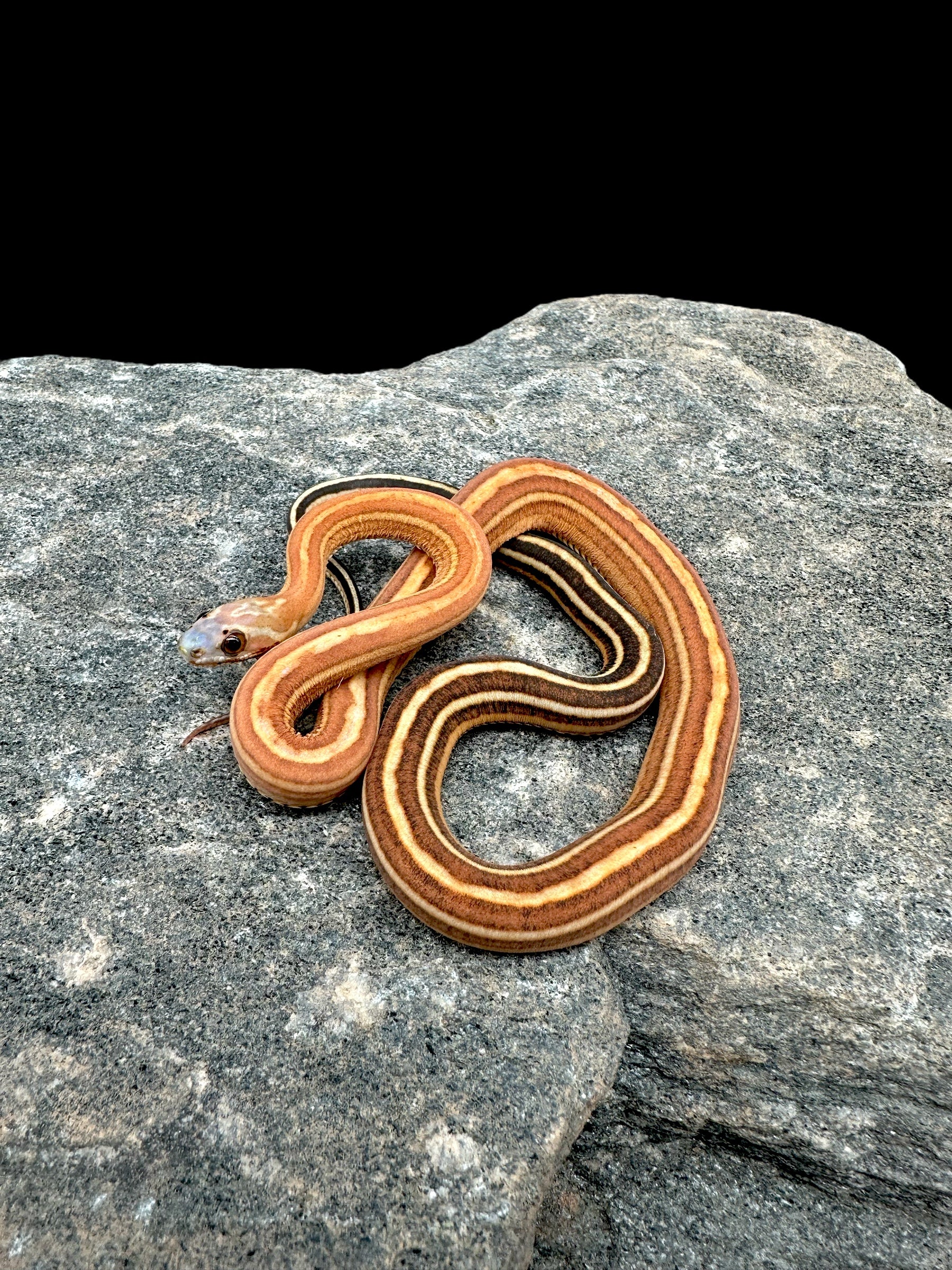Photo Disclaimer
Description
Corn Snake (Scaleless Tessera)
Scientific Name: Pantherophis guttatus
Common Name: Corn Snake
Species Overview
Size: Adults typically reach 3–5 feet (0.9–1.5 m) in length, with a lean, muscular frame and a smooth, scale-free surface that accentuates pattern and color.
Appearance: The Scaleless Tessera Corn Snake is a visually striking morph that merges the clean, streamlined striping of the Tessera gene with the reflective sheen of the Scaleless trait. This Corn Snake displays vivid orange to red tones (or varying base colors depending on underlying genetics) with a bold, continuous dorsal stripe bordered by evenly spaced lateral striping. The Scaleless trait intensifies these colors, giving the snake a glossy, glass-like texture that makes the pattern appear painted on. The result is a sleek, high-definition appearance that captures both simplicity and vibrancy, often regarded as one of the most elegant modern Corn Snake combinations.
Distribution: A selectively bred morph of the Corn Snake (P. guttatus), created by combining the Scaleless (recessive) and Tessera (dominant) genes.
Habitat: Wild Corn Snakes are native to forests, meadows, and agricultural areas across the southeastern United States. In captivity, this morph thrives in naturalistic enclosures with soft substrate, smooth décor, and secure hiding areas.
Behaviour: Corn Snakes are crepuscular, most active during dawn and dusk. They are hardy, adaptable, and consistent feeders, thriving in both display and breeding environments when provided stable care.
Captive Care
Enclosure: A naturalistic 40-gallon terrarium (36” × 18” × 18”) or larger works well for adults. Use soft, non-abrasive substrate such as soil, coconut fiber, or bioactive blends. Include rounded climbing branches, cork flats, and foliage for cover. Avoid sharp or rough décor to protect the scale-free skin.
Temperature & Humidity: Maintain a daytime gradient of 75–82°F (24–28°C) with a basking area of 86–88°F (30–31°C). Allow nighttime drops to 70°F (21°C). Maintain humidity between 50–65%, with a humid hide provided during shedding.
Diet: Offer frozen-thawed rodents every 7–10 days for juveniles and every 10–14 days for adults. Prey should be roughly 1.25× the width of the snake’s mid-body.
Behaviour in Captivity: Corn Snakes adapt readily to naturalistic setups and regular feeding schedules. Scaleless individuals benefit from moderate humidity and softer surfaces to support smooth, complete sheds.
Special Considerations: The Scaleless Tessera Corn Snake is an excellent foundation for future breeding projects, pairing especially well with color morphs such as Amel, Hypo, or Anery to produce linearly patterned snakes with enhanced contrast or pastel tones. It remains one of the most versatile and visually appealing combinations in modern Corn Snake breeding.
Genetics Note
Scaleless (Recessive)
Removes external scales, producing a smooth, glossy surface that enhances color saturation and pattern clarity.
Tessera (Dominant)
Creates a distinct, unbroken dorsal stripe and symmetrical lateral striping. A single copy is sufficient to express the trait.
Genetic Combination Summary
The Scaleless Tessera Corn Snake expresses one recessive and one dominant trait:
-
Scaleless = Removes scales, creating a reflective surface that amplifies color depth
-
Tessera = Produces a clean dorsal stripe and evenly spaced side striping
Together, these traits produce a streamlined, high-contrast snake with vivid coloration and a sleek, glass-like finish. The Scaleless Tessera Corn Snake is valued for its precision pattern, striking texture, and adaptability as a base morph in multi-gene projects.

